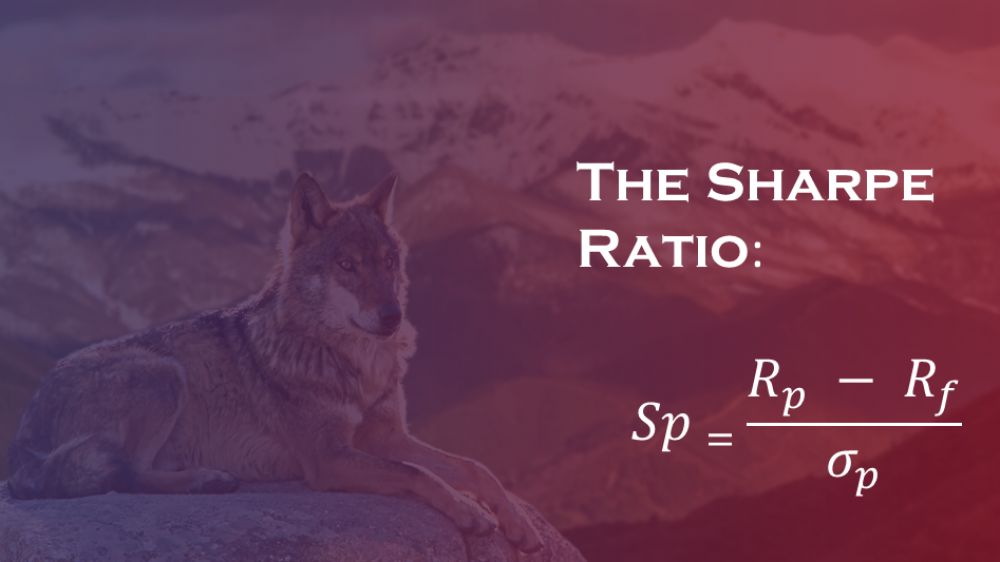
Any investment implies risk, and before diving into a new venture, investors want to know if their investment will be worthwhile. This is where the Sharpe ratio comes into the picture.
Developed by the laureate of the Nobel Prize in Economics in 1990 William F. Sharpe, the Sharpe ratio became a widely used tool for investment performance analysis.
The Sharpe ratio, or the reward-to-variability ratio, is a financial indicator that designates the performance of a risk-adjusted investment portfolio. It measures the excess return on an investment portfolio of assets in comparison with the risk-free assets relative to its standard deviation. Usually, the risk-free rate of return is the US Treasury bill rate matching the duration of the comparable investment.
The ratio is calculated as the difference between the returns of the investment portfolio and the risk-free return, divided by the standard deviation of the investment portfolio. It represents the additional amount of return earned by taking additional risk.
The formula for calculating the Sharpe ratio is: R (p) – R (f) /s (p)
Where
R (p): Portfolio return
R (f): Risk-free rate of return
s (p): Standard deviation of the portfolio excess return
Examples of using the Sharpe ratio:
1. Let us assume we have an ETF with a 5-year, 30% return (Rp = 30). Whereas, the 5-year Treasury has a rate of 2% (Rf = 2). In this example, let us assume the standard deviation is 20% (σp = 20).
Now we can do the Sharpe ratio calculation:
Sharpe ratio = (30 – 2) /20 = 28/20 = 1.4
Typically, the grading of the Sharpe ratio is interpreted as follows:
1. <1 – Poor
2. 1 - 1.99 – Normal
3. 2 - 2.99 – Good
4. >3 – Excellent
In the example above the Sharpe ratio of 1.40 shows that the ETF volatility is significantly offset by an additional return.
2. For example, let us assume we have a portfolio of 50 % equity and 50 % bonds, with a portfolio return R (p) - 20 % and a standard deviation s (p) – 10%. The risk-free rate is 5%. In this case, the Sharpe ratio will be:
(20%-5%)/10% = 1.5
Let us diversify our portfolio by adding another asset class of liquid alternatives, which would alter our portfolio allocation to 50% in equity, 30% in bonds, and 20 % in liquid alternatives. After adding the liquid alternatives, the portfolio return becomes 30% and the standard deviation remains at 10 %. If the risk-free rate is taken as 5 %, the new Sharpe ratio will be:
(30%-5%)/10% = 2.5
The value of the Sharpe ratio has now increased. This means that adding liquid alternatives to our portfolio can give a boost to the overall portfolio return without incurring any additional risk.
The Sharpe ratio, however, has its pitfalls. The main issue with the Sharpe ratio is that it includes downside as well as upside volatilities. This means that the Sharpe ratio will show a low value in a low-risk portfolio strategy with low downside volatility and high upside volatility.
This is why in active portfolio management strategies investors utilize an alternative to the Sharpe ratio called the Sortino ratio, which evaluates the return by taking into consideration only the downside volatility. In strategies applied by our partnering company in asset management, the Sharpe ratio is above 3, and the Sortino ratio is above 11, which designates that not only the strategy itself has an excellent risk-reward ratio, but the upside results of the strategies exceed manifold its tails and its downside volatility.
Stay tuned with Wolfline Capital, and you will learn more useful and practical insights into investment banking and asset management.
